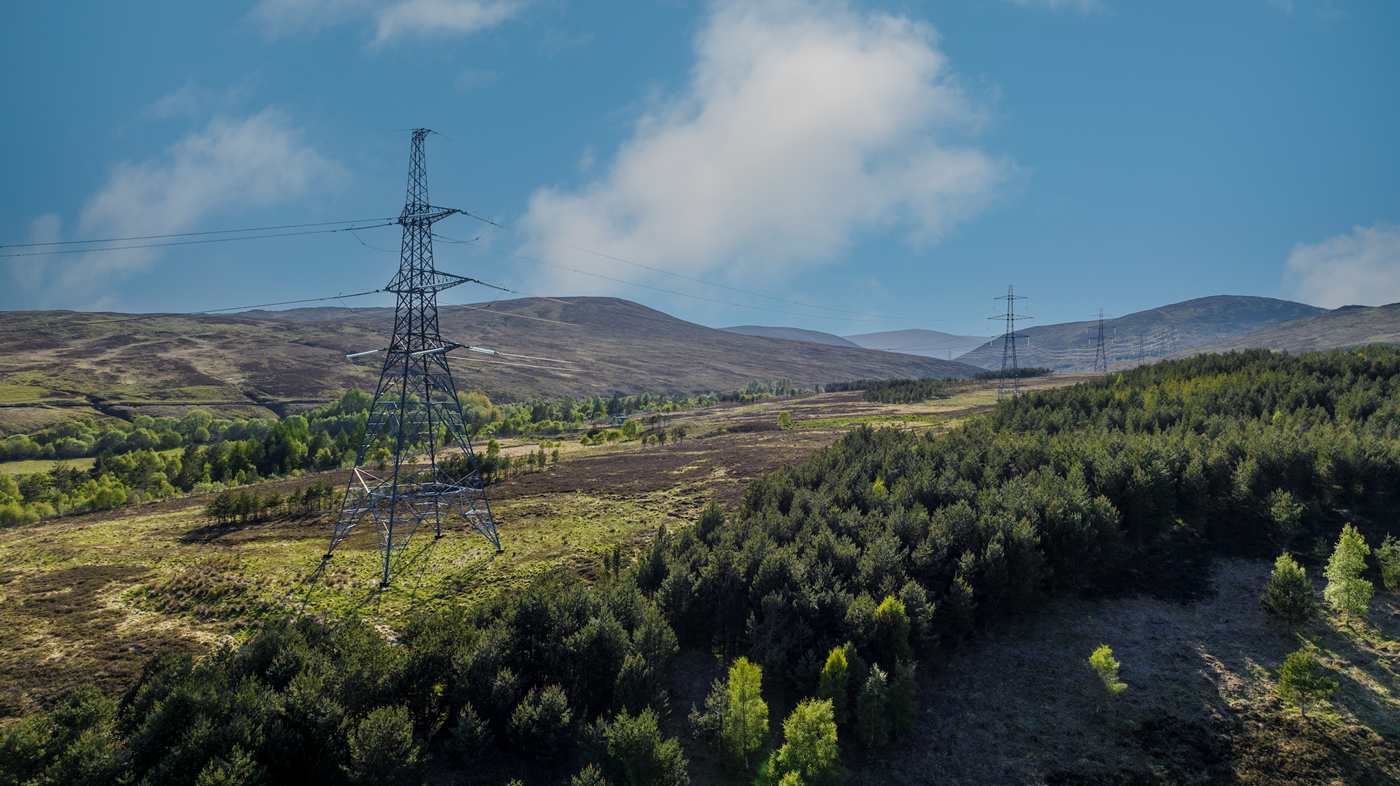As strong as oaks: Horsepower harnessed to ensure a sustainable future for Scotland’s forests
For the first time since the modernisation of the electricity network, horses are being used to extract timber on some SSEN Transmission projects.
It may be the image of a bygone era, but there is still very much a place for horse logging - the extraction of timber - from Scotland’s forests.
So much so that SSEN Transmission has contracted in Future Forestry, a business that combines the latest in forestry technologies with the tricky extractions only possible with horses, to help with removing timber on one of it’s projects in Brechin.
Based in Aberdeenshire in the Northeast of Scotland — but operating across the country — Future Forestry is finding that there is still a place for horse logging where access, space, environmental, or ground sensitivities don't allow for modern-day machinery.
While the business has recently invested in robotic machinery for removing timber from site, it has also welcomed three new four-legged team members to help with the task - Eli, Luke, and Ben.
Director of Operations at Future Forestry, Angie Smith said:
"It has always been our mission to be forward-thinking with investment in new technologies to make work safer and more efficient, but time saving isn't always the main priority on a lot of our worksites.
"We have to consider the environment we are working in and how we can leave a site having caused as little impact as possible on what remains. It's always a balance between getting value for our clients and mitigating our impact.
"When I heard that the previous owner John was retiring from working with the heavy horses, I knew we had a place for them, even on some of our commercial contracts.
“Our fantastic equine manager, Annie Hutchison, spent a year settling them in after their move from Rochdale and has also been helping with staff training. We currently have four staff members who have undergone horse logging training courses as members of the British Horse Loggers.”
From left, Equine Manager Annie Hutchison, Future Forestry Director Angie Smith and SSEN Transmission Head of Vegetation Management Martin Sangster | Craig Steven
To date, the horses have worked on a number of projects, including one for SSEN Transmission at a location close to Brechin in Angus.
Future Forestry's work on the spur that connects the overhead line to the Brechin substation is the final phase of the resilience work on the 132kV overhead line circuits from Tealing to Arbroath.
The site was classed as ‘high risk’ to the network due to the size and proximity of conifer trees in the area, so the trees were scheduled for removal.
Commercial harvesting operations are being used for much of the work, but an area around 0.5 hectares in size required sensitive felling and pruning as it was adjacent to a neighbouring property.
Helping to minimise disturbance, manual tree cutting along with horse logging was used to sensitively extract timber from amongst the broadleaf trees that are being retained as a space that the surrounding properties use.
Future Forestry at work with Eli | Craig Steven
Vegetation Management Operations Manager for SSEN Transmission, Martin Sangster said: “We are not aware of horses being involved in tree-felling work since the network was modernised; however, we’ve been aware of the practice.
“Future Forestry has been working with SSEN Transmission for a long time, and when they suggested this technique to help manage the requirements of the task, we were supportive.
“It also alleviated the concerns of nearby residents who were worried all trees were being removed with heavy machinery. On learning of the horse logging technique, they became supportive of the plans and appreciative of the steps being taken to reduce the impact of felling operations.”
Chair of the British Horse Loggers Charitable Trust, Steffi Schaffler said: “Horse logging is a method of extracting timber from forestry sites that is sensitive, sustainable and effective. Horses don't replace machines but do jobs that wouldn't be possible with other methods.
“They were traditionally used as an only tool, nowadays they are a specialised and brilliant one. They make it possible to keep the forestry system intact while extracting large amounts of timber without damage to the ground or the standing crop.
“The British Horse Loggers are representing people working horses in forestry and promoting their work within the industry.”
